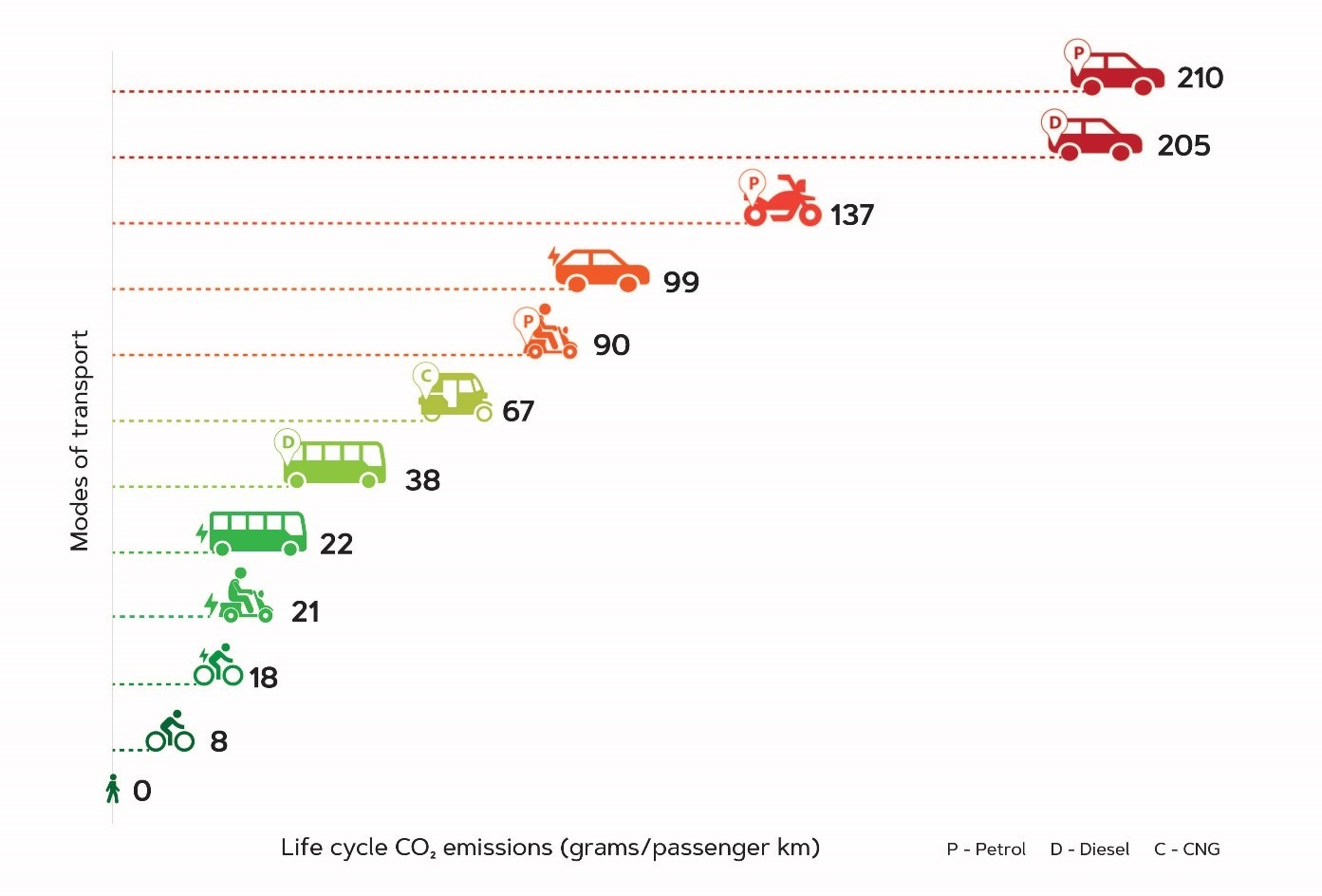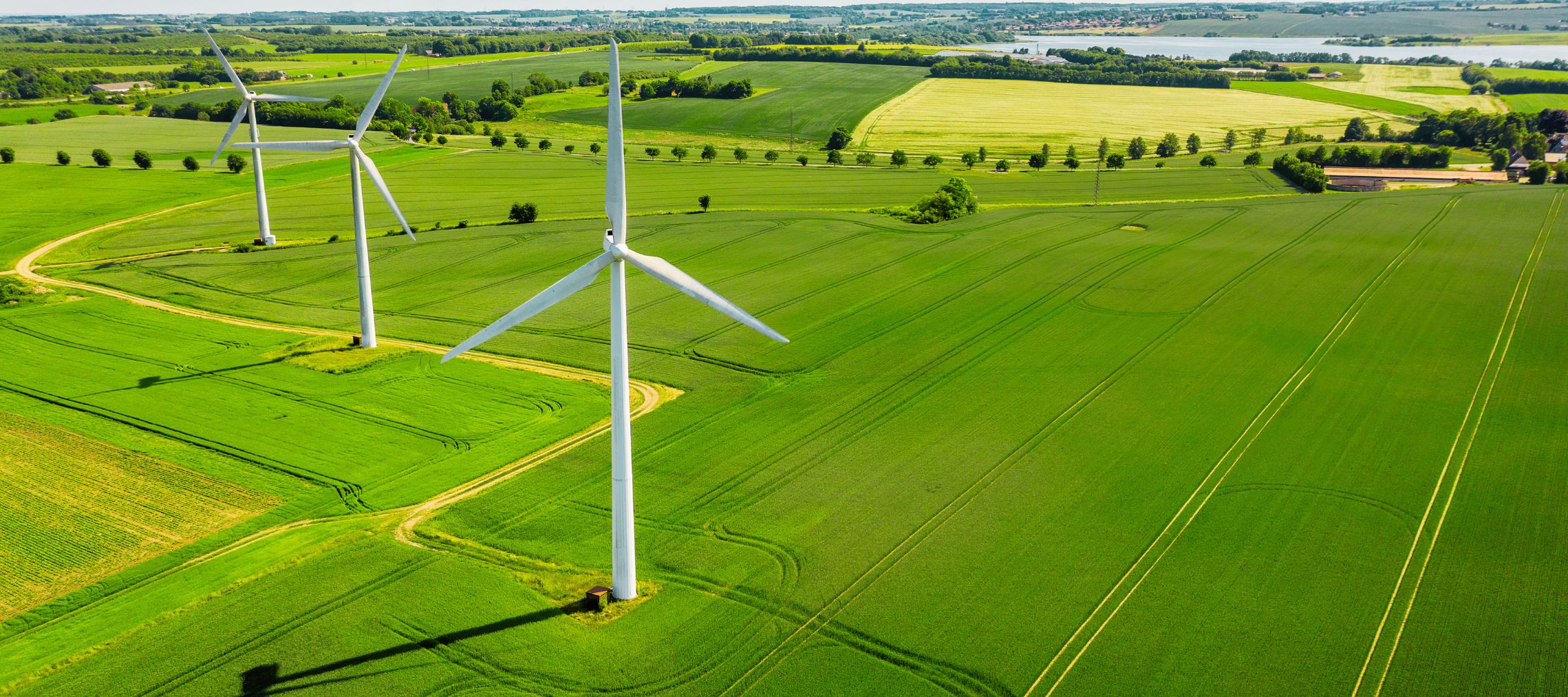India became the fifth largest economy surpassing the UK recently, recording a greater-than-expected 7.2% GDP growth rate in FY 2022–23. Also, as per the latest State of World Population (SOWP) report by the United Nations Population Fund (UNFPA), India is the most populous country on the planet, leaving behind China.
Growing population and economy are often accompanied with a rising urban population, which ultimately results in a higher demand for transportation. Undoubtedly, transportation (both public and goods) is the lifeline of any city, and its demand is often dubbed as an indicator of economic activities.
This World Environment Day begs the question—how sustainable are the mobility practices of urban dwellers in India.
Simply put, the answer boils down to our choices of transport, which impact the environment differently. Emissions associated with a vehicle from the early stages of its manufacturing to scrappage (end of operational life) are captured as ‘life cycle emissions’, a holistic metric to compare different modes. The higher the life cycle emissions of a vehicle, the higher the impact on the environment.














Figure. Plot depicting life cycle CO2 emissions generated by various modes of transport. Note: Data to plot this infographic were obtained from ‘The environmental impact of today’s transport types’ (https://tnmt.com/infographics/carbon-emissions-by-transport-type/) and Pradeep, C. J., & Ram V., V. (2021). Estimation of CO2 Emission Savings from a Metro Rail System Using Different Methodologies: A Case Study of Mumbai, India. European Transport/Trasporti Europei, 81(ET.2021), 1–14. https://doi.org/10.48295/et.2021.81.2.
Transport modes like walking, cycling, taking the bus (and metro, if available), or a combination of these have the lowest carbon footprint. Scooters and motorbikes, constituting over 65%–70% of the Indian urban vehicle fleet, have at least 34% higher carbon footprint than auto rickshaws. However, given two wheelers occupy the least road space and have a high fuel economy among all motorised vehicles, they remain the least harmful amongst all personal vehicles.
Cars, both petrol and diesel run, have five times higher carbon footprint than buses. As cars are safer than two wheelers and offer better comfort and convenience than other modes, their usage for inter-city drives and on recreational occasions is acceptable. However, daily urban commute using cars is most damaging—not only to the environment but also to the already worsening traffic condition in urban areas. This also impacts the country’s fuel import bill because even the most fuel-efficient hatchback cars in the Indian markets consume two times more fuel than scooters for the same distance. Plus, cars occupy more road space per passenger than all other transport modes.
Further, in a low-middle-income country like India, the aspiration for car ownership is growing, while the popularity of public transport (especially buses) seems to be diminishing. Like any other goods and services, rise in car ownership certainly contributes to the country’s economy, but its regular usage for urban commute needs careful attention, given its high carbon footprint.
So let’s take a look at some alternatives to taking a car. A major portion of one’s daily commute distance can be covered by bus (or metro, if available) along with paratransit services like auto rickshaws for doorstep pick-up/drop-off and using active mobility options like walking. Fast emerging micro-mobility options can also be used for first-and-last mile connectivity. For those reluctant to change vehicles during commute, carpooling is a sustainable yet cost-effective and convenient option. Personal vehicles should be the last resort, only in the absence of any such alternatives, and the same can be driven by cleaner energy to reduce their environmental impact.
This World Environment Day, current and aspiring vehicle owners need to rethink their travel choices and contribute to building a cleaner and greener planet.
The author works in the area of Green Mobility at the Center for Study of Science, Technology and Policy (CSTEP), a research-based think tank.









